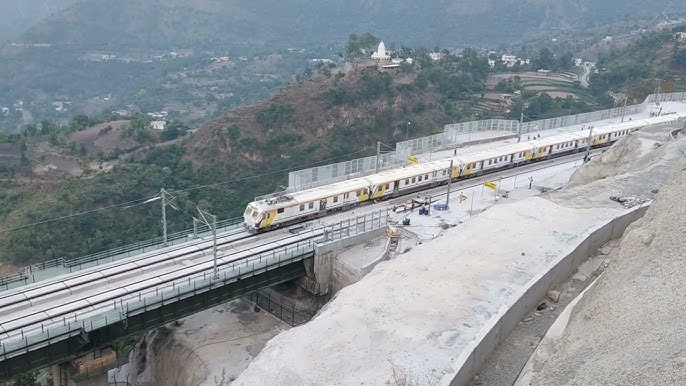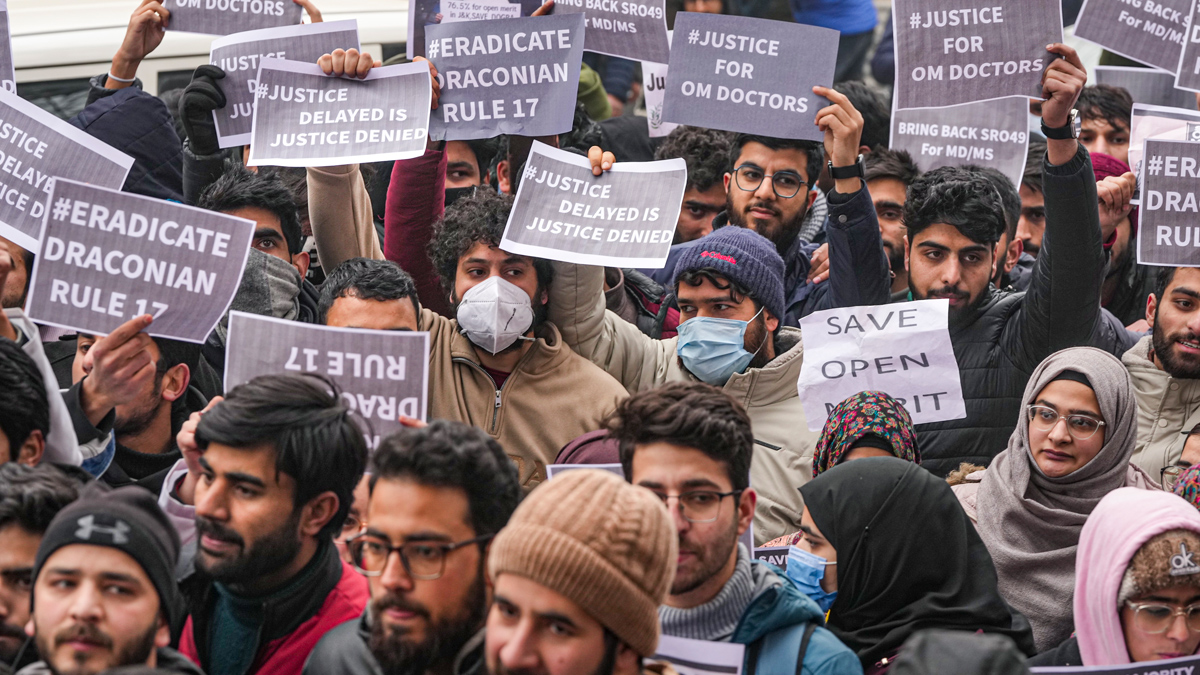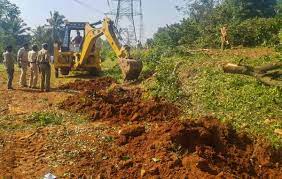Successful speed trial paves way for first train to Valley
The final obstacle to link Kashmir Valley with the rest of the country through rail was overcome on Wednesday when the Northern Circle Commissioner of Railway Safety (CRS) conducted a successful speed trial on the Katra-Banihal rail route paving the way for the first train to start operations soon.
The CRS, Dinesh Chand Deshwal, said that data gathered during the two-day inspection of the rail line would be analysed and shared with the Centre after which a decision to start a train to the Valley would be taken.
“High speed trial run was successful from both directions from Katra to Banihal and vice versa. The train chugged at a speed of 110 kmph. The trial was successful. The alignment of the track has been built with precision despite that fact that there were many challenges during construction but the engineers have used their experience and expertise,” the CRS told media persons.
He said that after the data is analysed for precise details of the trials, the Centre will take a decision to start a train. The trial train left Katra station at 10:30 am and reached Banihal station within one-and-a-half hours. The train left for Katra on its return journey at 2 pm and reached its destination by 3:30 pm.
Of the total 272-km Udhampur-Srinagar-Baramula Rail Link (USBRL) project, 209 km were commissioned in phases. The inspection was also conducted on the cable-stayed Anji Khad bridge and Arc Chenab bridge in Reasi district.
The CRS also held inspection of tunnels and tracks between Katra and Banihal section to minutely check the alignment and other details of the track. The tracks were earlier tested for load. On Saturday, a train trial run was conducted on the Katra-Banihal section of the track.
Prime Minister Narendra Modi had recently inaugurated a separate railway division for Jammu. During the virtual inauguration from Delhi, the PM stated that J&K is achieving new milestones in railway infrastructure with the Udhampur-Srinagar-Baramulla rail line, which is being discussed all over the country.
The creation of the Jammu Railway Division, with 742.1 km comprising Pathankot-Jammu- Udhampur – Srinagar – Baramulla, Bhogpur Sirwal – Pathankot, Batala – Pathankot and Pathankot to Joginder Nagar sections, is believed to significantly benefit J&K and surrounding regions.
Anji rail bridge: A new milestone for Railways
The Indian Railways, which is on the path of development, is now moving towards showcasing one more classic example of an engineering marvel with the newly built Anji Rail Bridge. The country’s first cable-stayed rail bridge is constructed in Reasi district under the most challenging Udampur-Srinagar-Baramulla-Rail Link (USBRL) Project of the Railways.
Anji Khad Bridge is the country’s ‘first cable-stayed bridge’ connecting Katra and Reasi. It is located in the young fold mountains of the Himalayas, having extremely complex, fragile and daunting geological features in the form of faults, folds and thrusts, and besides, the seismic proneness of the region. Slopes of the mountain supporting one foundation of the main span have been stabilised by a special hybrid foundation on the Katra end due to space constraints. The major portion of the bridge works, including the main pylon with a 40 m deep hybrid foundation, the central embankment, and the ancillary viaduct, were carried out on the Srinagar end.
Speaking about the technical details of the bridge, the Chief Administrative Officer (CAO) of the USBRL project, Sandeep Gupta, said, “The total length of the bridge is 725.5 m. This bridge has a single main pylon of height 193 m from the top of the foundation, standing at a height of 331 meters above the riverbed. Considering the ease of construction and typical site conditions, the bridge has been divided into four parts. We have built a 120 m long approach viaduct called the “ancillary viaduct” on the Reasi side and a 38 m long approach bridge on the Katra end (CA2).”
“The main bridge, crossing the deep valley, is a 473.25 m cable-stayed portion. The central embankment, which is 94.25 m, is located between the main bridge and an approach ancillary viaduct,” Gupta added.
CAO Gupta further said that it is an asymmetrical cable-stayed bridge balanced on the axis of a central pylon. The total deck width of the bridge is 15 m. The bridge has support of 96 cables having cable lengths varying from 82 m to 295 m. The micro piles of 40-meter depth all around the circumference of the 20-meter hybrid well foundation were used in the Main Pylon construction.
Gupta informed that the bridge carries a single railway line plus a 3.75 m wide service road; there is a 1.5 m wide footpath on each side of the deck with an overall width of 15 m. It has been designed to handle heavy storms of strong winds. The design wind speed considered is 213 km/h. The design speed of the line is 100 km/h, a limit that does not pose problems for the train-structure interaction.
The Anji Khad Bridge has an integrated monitoring system using numerous sensors installed at various locations on the bridge. Site-specific earthquake parameters studies were carried out by IIT, Roorkee. Due to the importance of the bridge, a large number of sensors were placed on it to monitor the structural health of the bridge during service.
Gupta said the whole section is ready for operation and after train inspection by the Commissioner of Railway Safety (CRS), they will plan for train operation between Katra and Srinagar.



